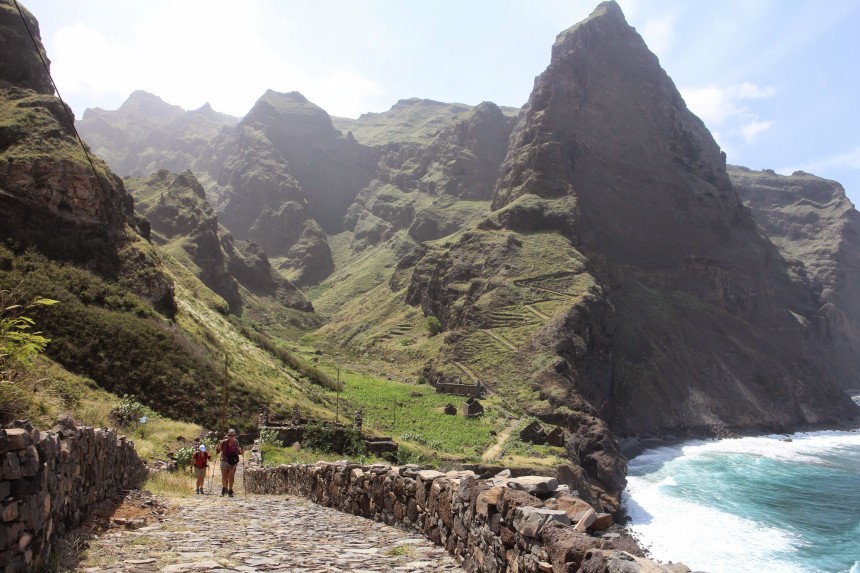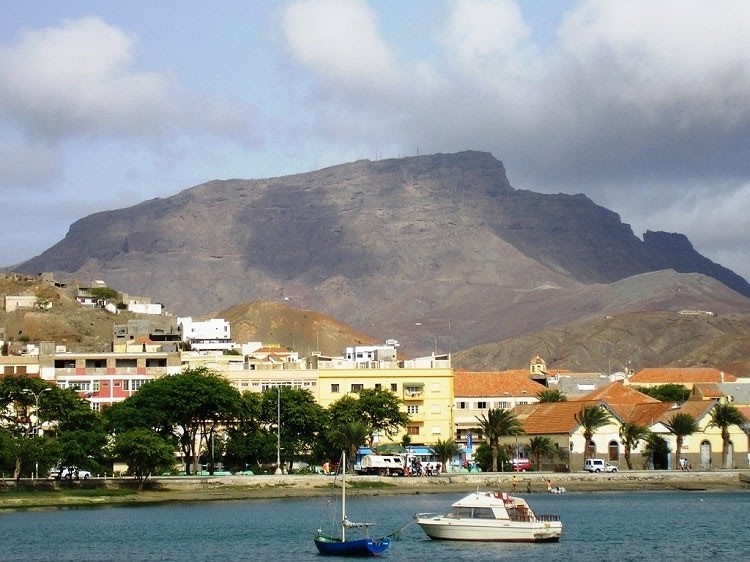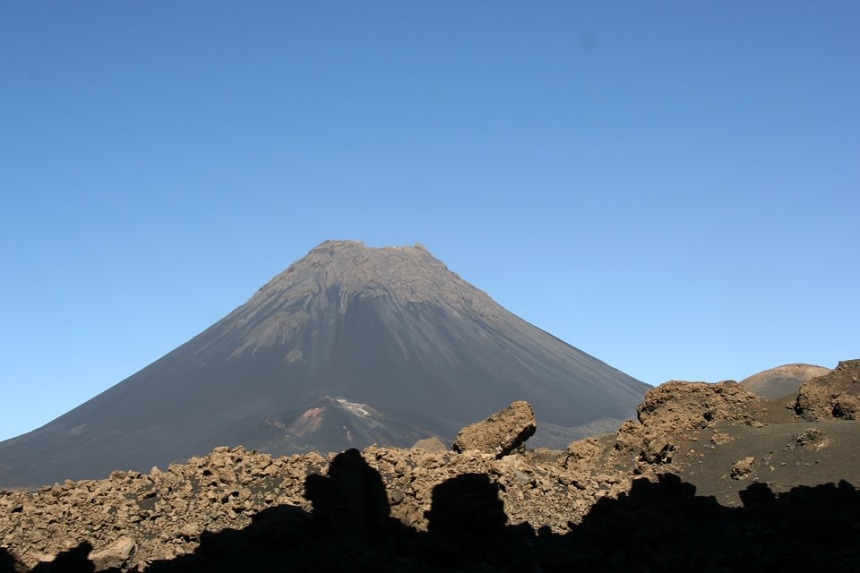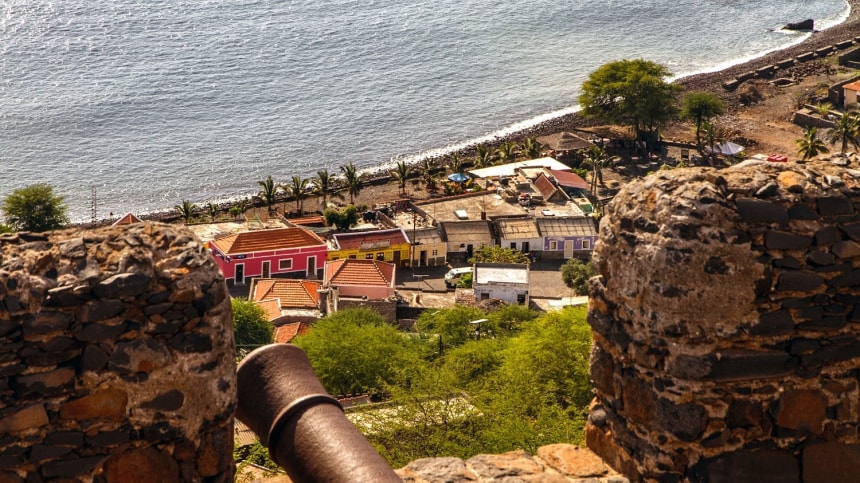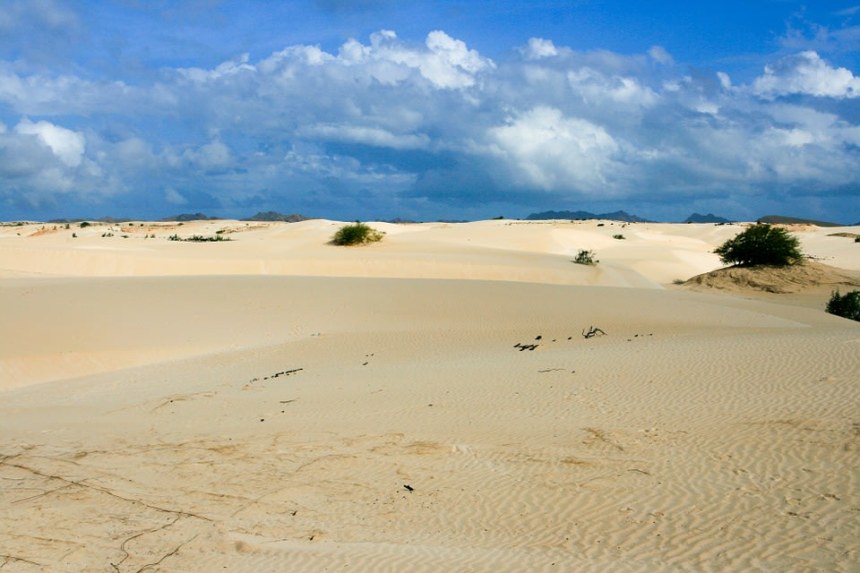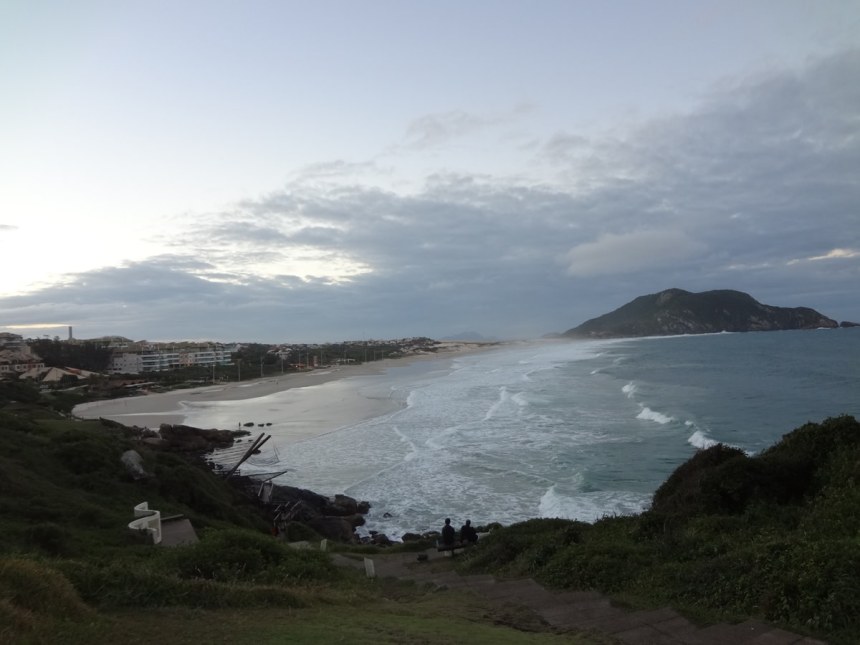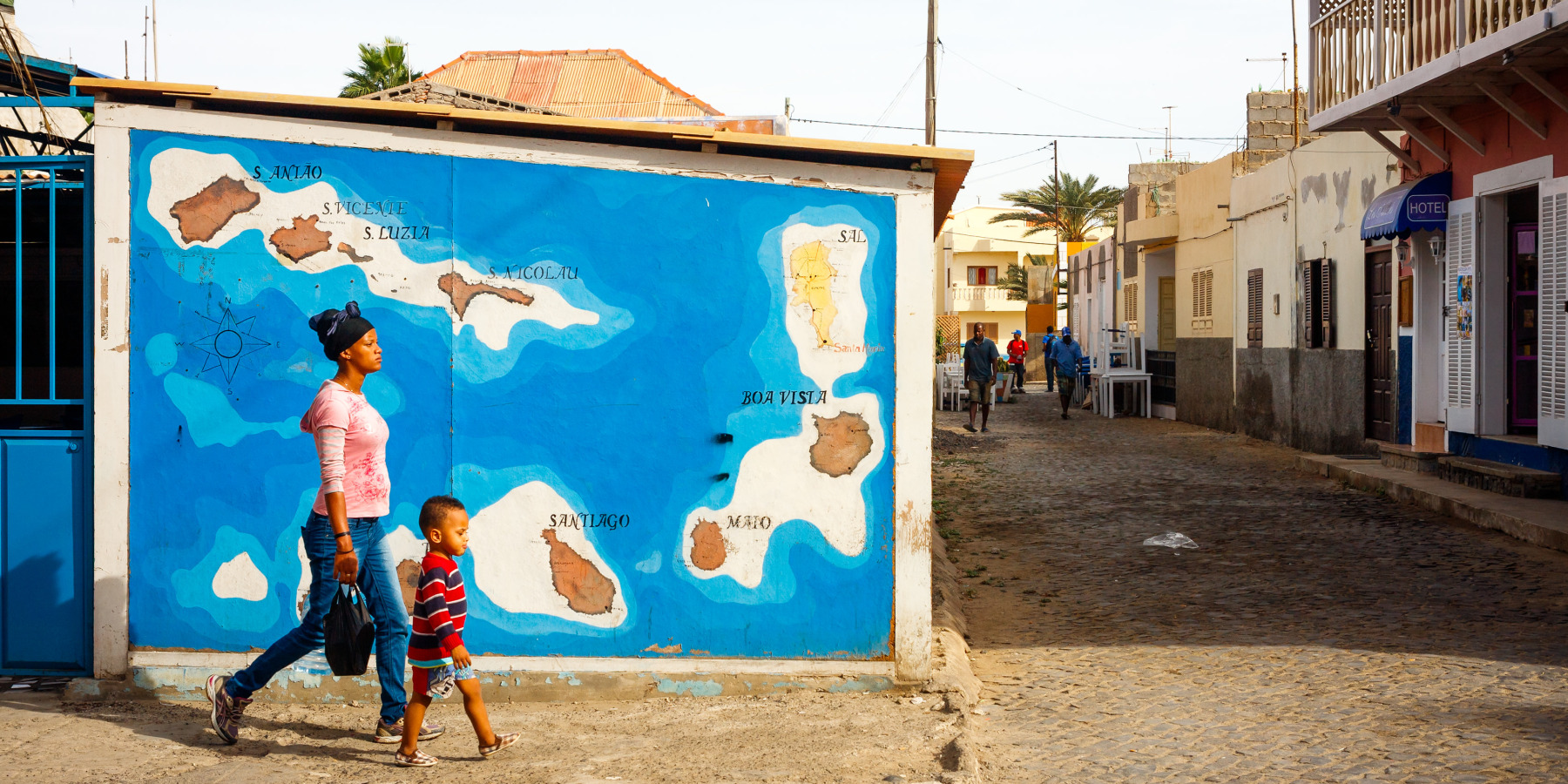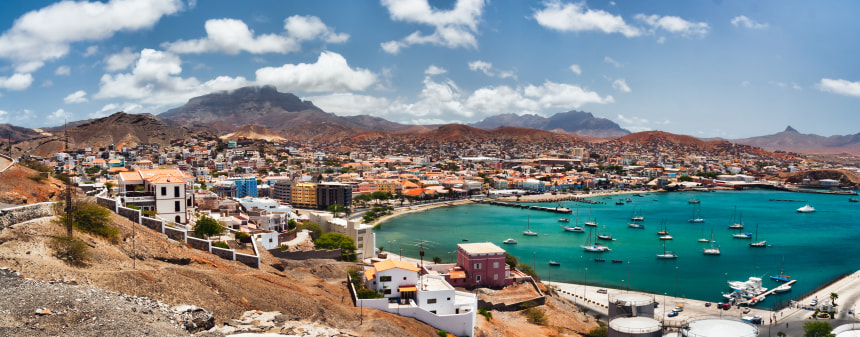Ross Cameron
Rising precipitously out of the Atlantic Ocean nearly 500 kilometres west of Senegal, the sun-drenched islands of Cabo Verde, translated as ‘Green Cape’, are one of the world’s most culturally and geographically diverse archipelagos. The island’s landscapes range from surreal lava fields to tropical forests and vast sand dunes while the archipelago’s harrowing role in the slave trade has at least evolved into a vibrant Creole culture. While the islands are rightly on the tourist map for their spectacular beaches and eternal sunshine, this Cabo Verde travel guide will showcase the isolated archipelago’s unique attractions.
Santo Antão: A seamless blend of rainforests and desert
 Rising near vertically out of the churning Atlantic, Santo Antão puts the green in ‘Green Cape’. Unlike the other large islands of the archipelago, Santo Antão’s steep mountainsides are clad in exotic forests of banana and papaya trees while in the interior, deep ravines and gorges have been colonized by rare tropical plants. Santo Antão is renowned for dizzying hikes that offer some of West Africa’s most jaw-dropping vistas. The best place to start is in the charming ocean-side village of Vila das Pombas, where a country road leads up into the mountainous interior and is the starting point for many of the best trails. When in the island’s interior make sure to stop at the picture-perfect villages and take a trip to the southern coast to explore lesser-known desert landscapes.
Rising near vertically out of the churning Atlantic, Santo Antão puts the green in ‘Green Cape’. Unlike the other large islands of the archipelago, Santo Antão’s steep mountainsides are clad in exotic forests of banana and papaya trees while in the interior, deep ravines and gorges have been colonized by rare tropical plants. Santo Antão is renowned for dizzying hikes that offer some of West Africa’s most jaw-dropping vistas. The best place to start is in the charming ocean-side village of Vila das Pombas, where a country road leads up into the mountainous interior and is the starting point for many of the best trails. When in the island’s interior make sure to stop at the picture-perfect villages and take a trip to the southern coast to explore lesser-known desert landscapes.
São Vicente: The vibrant heart of Cabo Verde
 Small and lacking in spectacular topography, São Vicente would be forgettable if it were not for the vibrant Mediterranean town of Mindelo. Founded by the Portuguese in the 18th century, the town is a unique fusion of Portugal’s architectural charm and West Africa’s insatiable culture. The focal point of Mindelo is its picture-perfect harbor, which is lined by cobbled promenades and pastel-hued colonial buildings, notably the grandiose Palácio do Povo that has been transformed into Cabo Verde’s premier art gallery. This is unsurprising, as São Vicente has for decades been the cultural capital of the archipelago and has a clutch of bohemian bars and cafes where artists sip on grogue (a rum-like drink) and sample the island’s fantastic seafood. The best time to visit Mindelo is during Baia das Gatas, a yearly festival held in August that transforms the town into a raucous celebration of Cabo Verde’s traditional Afro-Portuguese music.
Small and lacking in spectacular topography, São Vicente would be forgettable if it were not for the vibrant Mediterranean town of Mindelo. Founded by the Portuguese in the 18th century, the town is a unique fusion of Portugal’s architectural charm and West Africa’s insatiable culture. The focal point of Mindelo is its picture-perfect harbor, which is lined by cobbled promenades and pastel-hued colonial buildings, notably the grandiose Palácio do Povo that has been transformed into Cabo Verde’s premier art gallery. This is unsurprising, as São Vicente has for decades been the cultural capital of the archipelago and has a clutch of bohemian bars and cafes where artists sip on grogue (a rum-like drink) and sample the island’s fantastic seafood. The best time to visit Mindelo is during Baia das Gatas, a yearly festival held in August that transforms the town into a raucous celebration of Cabo Verde’s traditional Afro-Portuguese music.
Fogo: A volcanic delight
 The entire island of Fogo, which translates as ‘fire’, consists of one jet-black conical super-volcano, which last erupted with devastating consequences in 2014. One of the most thrilling activities on offer in Cabo Verde is the chance to climb Fogo’s cinder-clad volcano with the help of local guides. While the ascent is a strenuous four-hour climb, the payoff is huge with remarkable vistas of the windswept lunar landscape. Beyond the volcano itself, Fogo is home to São Filipe, one of the archipelago’s most charming colonial towns with atmospheric cobbled plazas and picturesque churches built from lava blocks. Fogo also produces Cabo Verde’s finest produce with excellent vineyards and coffee bean plantations peppering the island that can be visited on tasting tours.
The entire island of Fogo, which translates as ‘fire’, consists of one jet-black conical super-volcano, which last erupted with devastating consequences in 2014. One of the most thrilling activities on offer in Cabo Verde is the chance to climb Fogo’s cinder-clad volcano with the help of local guides. While the ascent is a strenuous four-hour climb, the payoff is huge with remarkable vistas of the windswept lunar landscape. Beyond the volcano itself, Fogo is home to São Filipe, one of the archipelago’s most charming colonial towns with atmospheric cobbled plazas and picturesque churches built from lava blocks. Fogo also produces Cabo Verde’s finest produce with excellent vineyards and coffee bean plantations peppering the island that can be visited on tasting tours.
Santiago: A slice of West Africa in the Atlantic Ocean
 Santiago is the most typically African island in the Cabo Verde archipelago. Praia, the capital of Cabo Verde, is a buzzing port metropolis and its most enthralling attraction is undoubtedly the Mercado de Sucupira, where visitors can browse a sometimes-overwhelming abundance of tropical fruits and vegetables. Just outside of Praia is Cabo Verde’s most famous destination, the UNESCO World Heritage-listed Cidade Velha. Founded in 1462 as the first European settlement in the tropics, today visitors can explore the brooding fortress of São Filipe, which was designed to prevent attacks from marauding pirates, the town’s ruined cathedral and the haunting Pelourhino, where African slaves were traded. Beyond this, Santiago’s most unique attraction is the Tarrafal Concentration Camp Museum, which offers a harrowing glimpse into life under Portuguese rule.
Santiago is the most typically African island in the Cabo Verde archipelago. Praia, the capital of Cabo Verde, is a buzzing port metropolis and its most enthralling attraction is undoubtedly the Mercado de Sucupira, where visitors can browse a sometimes-overwhelming abundance of tropical fruits and vegetables. Just outside of Praia is Cabo Verde’s most famous destination, the UNESCO World Heritage-listed Cidade Velha. Founded in 1462 as the first European settlement in the tropics, today visitors can explore the brooding fortress of São Filipe, which was designed to prevent attacks from marauding pirates, the town’s ruined cathedral and the haunting Pelourhino, where African slaves were traded. Beyond this, Santiago’s most unique attraction is the Tarrafal Concentration Camp Museum, which offers a harrowing glimpse into life under Portuguese rule.
Boa Vista: The Sahara Desert in miniature
 Dominated by vast sand dunes that shift with the ferocious Atlantic winds, Boa Vista is the Sahara Desert in island form. While the coastline is peppered with luxury hotels that make the most of the golden beaches, Boa Vista’s real draw is the fantastic trekking and adrenaline pumping off-roading on offer in the Deserto de Viana, which is located in the island’s interior. Once you have explored the desert make sure to pay a visit to two of Cabo Verde’s spookiest attractions – the crumbling ruins of the village of Curral Velho, which was abandoned due to drought, and the rusting wreck of the Santa Maria, which ran aground on the spectacular Praia de Atalanta in 1968.
Dominated by vast sand dunes that shift with the ferocious Atlantic winds, Boa Vista is the Sahara Desert in island form. While the coastline is peppered with luxury hotels that make the most of the golden beaches, Boa Vista’s real draw is the fantastic trekking and adrenaline pumping off-roading on offer in the Deserto de Viana, which is located in the island’s interior. Once you have explored the desert make sure to pay a visit to two of Cabo Verde’s spookiest attractions – the crumbling ruins of the village of Curral Velho, which was abandoned due to drought, and the rusting wreck of the Santa Maria, which ran aground on the spectacular Praia de Atalanta in 1968.
Sal: A holidaymaker’s paradise

The arid island of Sal is by far the most popular destination in the Cabo Verde archipelago owing to its generous supply of sun-drenched beaches and dramatic waves that attract thousands of thrill-seekers. The focal point of the island is undoubtedly Santa Maria, which has a spectacular stretch of golden sand and an array of beach bars that host some of Cabo Verde’s most lively nightlife. Just beyond Santa Maria is the unusual landscape of Pedra de Lume, where salt is harvested in the bed of a vast volcanic lake, and the rocky lagoon of Burcona, a perfect spot for thrilling swimming and cliff jumping.
Maio: Spectacular beaches and historic towns
 Encircled by undeveloped golden sand beaches, the desert island of Maio is Cabo Verde’s most instantly attractive destination. The best place to start on the island is the pastel-hued village of Vila do Maio, which is located on the island’s southern tip and centered around a historic core of cobbled alleyways and colonial-era houses. Just north of the village, Maio’s coastline opens up into spectacular beaches, many of which remain unspoiled by crowds. A thrilling way to discover the island’s hidden sandy coves is by way of jeep safari, which also lets you pass through the quintessentially African acacia tree peppered interior.
Encircled by undeveloped golden sand beaches, the desert island of Maio is Cabo Verde’s most instantly attractive destination. The best place to start on the island is the pastel-hued village of Vila do Maio, which is located on the island’s southern tip and centered around a historic core of cobbled alleyways and colonial-era houses. Just north of the village, Maio’s coastline opens up into spectacular beaches, many of which remain unspoiled by crowds. A thrilling way to discover the island’s hidden sandy coves is by way of jeep safari, which also lets you pass through the quintessentially African acacia tree peppered interior.
"Over the past decade, Ross Cameron has travelled extensively across Europe, Southeast Asia, North America, North Africa, and the post-Soviet space. As someone who has a real passion for these regions of the globe, he is able to offer an expert opinion that highlights the best off the beaten track destinations."
Image details and licenses
Santo Antão: https://images.app.goo.gl/SMpsU3wtc8zBYQYB9 (Cadouf, CC BY-SA 4.0), São Vicente: https://images.app.goo.gl/Rjbq77FJR46WmhTPA(Manuel De Sousa, GNU Free Documentation License), Santiago: https://flic.kr/p/iWHHRM (Rey Perezoso, CC BY-SA 2.0), Maio: https://flic.kr/p/f8aoGM (Rosanetur, CC BY 2.0)
